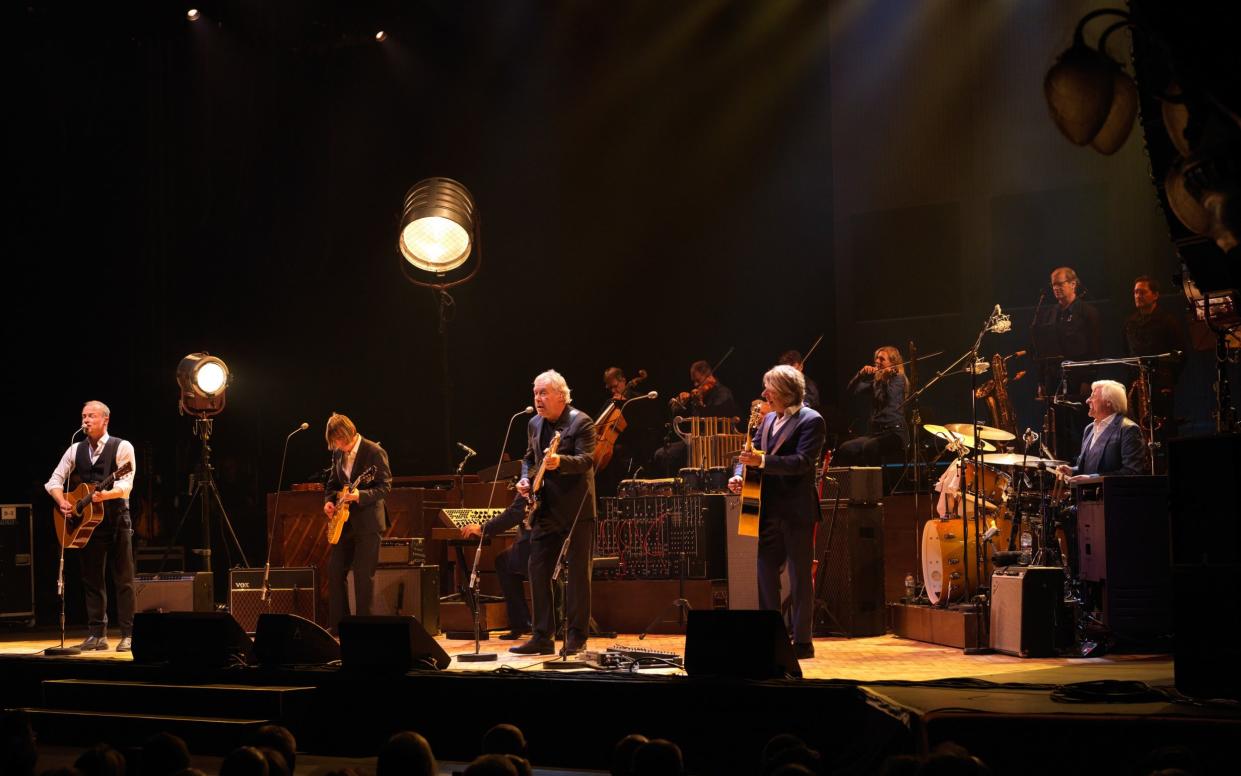They may not look like The Beatles – but golly, do they sound like them

For one night only, Abbey Road could be located in London’s West End. This was not some geographic anomaly, but a musical miracle, as tribute band The Analogues attempted something the Beatles themselves never did: played their final recorded masterpiece, in full, live on stage, in perfect sonic detail.
The Beatles themselves performed at the London Palladium in 1964, stopped touring in 1966, and last played live on a rooftop not far away in Saville Row in 1969. But if you had closed your eyes to soak up the music filling that august old venue on Monday night, you may have found it hard to believe the Fab Four weren’t back in action 52 years since they consigned themselves to pop history. The joy in the building, the sustained standing ovations and rapturously received encores were a vibrant testament to the continued resonance of their music, and the impressive abilities of the troupe performing it – even if the Fab Four had transformed into a slightly flabby five with suspiciously clipped northern-European accents.
The Analogues are a Dutch quintet who specialise in accurately recreating Beatles recordings from their later studio years, using the correct vintage instruments. There were no period costumes or comical impersonations, which is probably just as well. The tribute here is to the brilliance of the original arrangements, allowing fans to make a visual connection between the instruments being played and the sounds we have been listening to for so long.
Effectively double- and triple-tracking themselves live, the ensemble were augmented by 11 supporting players, with horns, strings, keyboards, guitars and extra vocalists seamlessly arriving and departing as the band played on. Their dedication and attention to detail was demonstrated by the site of a percussionist pushing out a heavy anvil to bash on the chorus of Maxwell’s Silver Hammer. Frankly, this was a show where the crew were as deserving of applause as the stars.
Lead guitarist Jac Bico was sensational, covering both the fluid licks of George Harrison and raw and bendy playing of John Lennon in the guitar duel from the end of the Abbey Road medley, before pulling out a perfect Eric Clapton solo for a version of While My Guitar Gently Weeps in a second half set of late-Beatles highlights. But to single out one player in the ensemble feels unjust, as they all swapped instruments, sang harmonies, and put together jigsaw arrangements with a forensic attention to detail and the humility of players utterly reliant upon each other. These were musicians in the service of the music itself, which sounded as vividly brilliant and alive to the moment as when it was first laid down all those years ago.
Some might dismiss it as nostalgia, but orchestras still play Beethoven and Mozart symphonies with perfect verisimilitude, so why not treat the greatest music of the pop era with similar respect? Across town at the Olympic Park, you can see Swedish supergroup Abba’s performances recreated nightly in a hi-tech spectacular involving state-of-the-art 3D holographic avatars that cost more than £100 million to concoct. The fact that the Analogues can stir the same kind of rush with a fraction of such resources is a testimony to the power of live music played by brilliant musicians.
So let’s hear it for John, Paul, George and Ringo, and Bart, Felix, Jaco, Fred and Diederik. As long as there are players as committed and talented as the Analogues around, the Beatles will never die.

 Yahoo Movies
Yahoo Movies 
